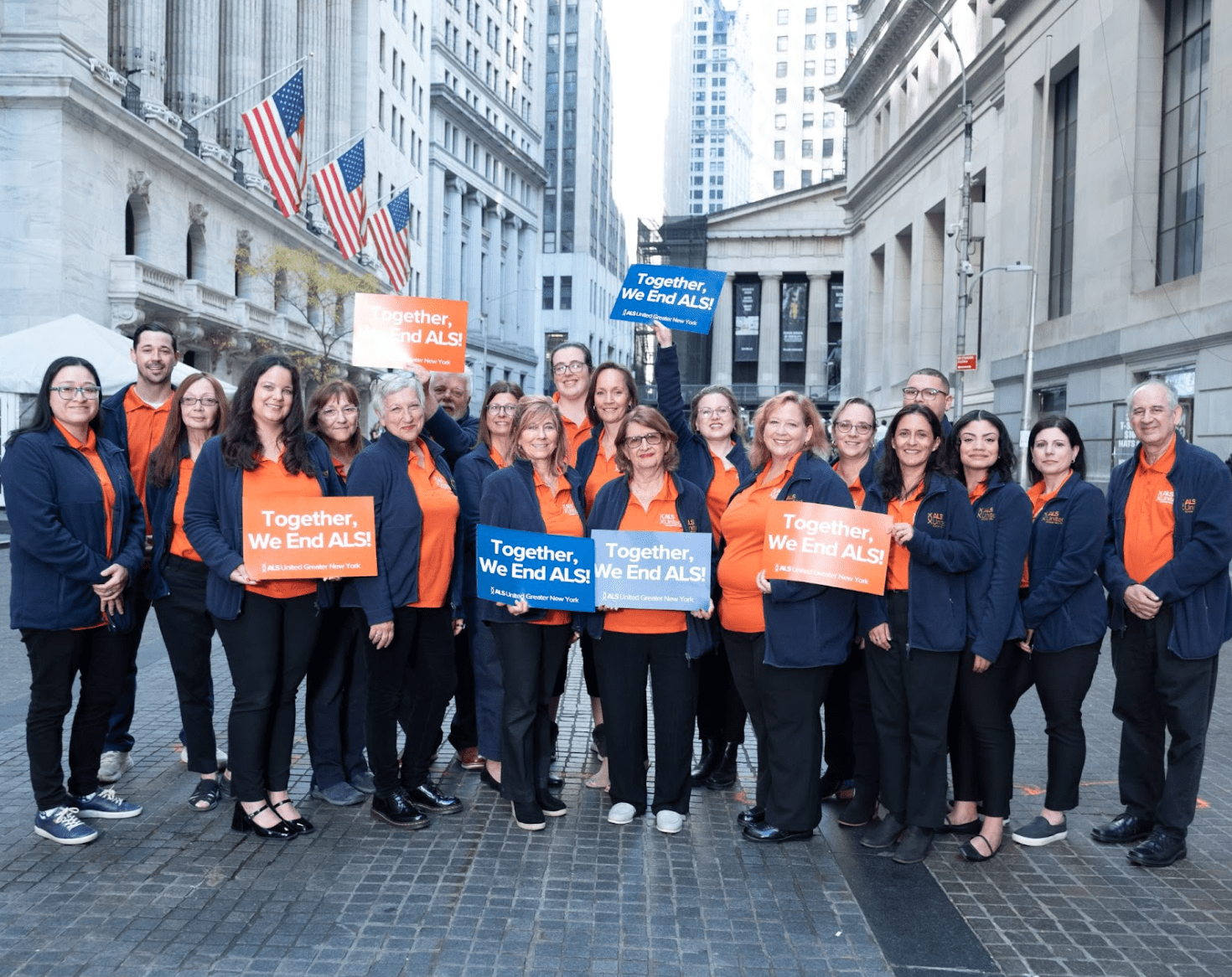
Target ALS is proud to announce the 2025 awardees of our Drug Discovery Consortia program, a strategic initiative designed to bring new, biologically rational therapeutic targets into the ALS clinical pipeline. These four multi-institutional collaborations unite academic scientists and industry partners to pursue innovative mechanisms of disease, generate translational data, and accelerate the development of next-generation treatments.
Each awarded consortium focuses on a distinct therapeutic strategy that addresses a core driver of ALS pathology. Together, they represent a forward-looking push to expand the diversity and quality of drug candidates entering preclinical and clinical development.
Optimizing Antisense Oligonucleotides to Safely Knock Down CCDC146
Leads: Johnathan Cooper-Knock (University of Sheffield), Xibo Li (SynOligo), Sai Zhang (Yale University), Justin Ichida (University of Southern California), Ana Jovičić (Genentech)
Researchers have found that lowering a protein called CCDC146 can significantly protect nerve cells in ALS. In both patient-derived neurons and a fast-progressing ALS mouse model, reducing this protein dramatically improved survival. This project aims to develop a safe, precise drug that can lower CCDC146 without affecting other important proteins.
The team is creating an antisense oligonucleotide (ASO) therapy, similar to the FDA-approved ALS drug Tofersen. They will test different ASO designs to find the most effective and safest version, first in human cells and then in mice engineered to carry the human form of CCDC146. Their studies will measure how well the drug reaches tissues, how much is needed for benefit, and whether it causes any unwanted effects.
The goal is to deliver a refined CCDC146-lowering therapy with strong safety and efficacy data, ready to advance toward clinical testing.
Advancing SYF2 Antisense Oligonucleotides to Restore TDP-43 Function
Leads: Wen-Hsuan Chang (AcuraStem), Philip Wong (Johns Hopkins University), Wilfried Rossoll (Mayo Clinic Jacksonville), Marcel van der Brug (AcuraStem)
In most people with ALS, a key protein called TDP-43 stops working properly, and this breakdown is believed to drive much of the disease.
This project is developing a new therapy that targets another protein, SYF2, which helps cells process RNA, the instructions for cells to make proteins. Studies in patient-derived neurons show that lowering SYF2 can restore TDP-43’s normal activity, protect motor neurons, and help them survive longer.
The team is creating an antisense oligonucleotide (ASO) drug, called AS-251, designed to safely reduce SYF2 levels in neurons. Their goal is to figure out how much SYF2 needs to be lowered to see a benefit, understand how this affects TDP-43, and map the cellular pathways involved.
Because this therapy targets a core process that affects nearly all people with ALS, not just those with rare genetic mutations, it has the potential to help the vast majority of patients, including those with no family history of the disease. The results from this work will provide the foundation needed to move AS-251 toward clinical testing and ultimately develop a disease-modifying treatment for ALS.
Developing a Small Molecule to Correct UNC13A Splicing Defects in Sporadic ALS
Leads: Christopher Rusconi (Ladder Therapeutics d.b.a. Serna Bio), Sami Barmada (University of Michigan), Jason Swedlow (University of Dundee), Alistair Langlands (University of Dundee), Ashkan Javaherian (Ladder Therapeutics d.b.a. Serna Bio), Rabia Khan (Ladder Therapeutics d.b.a. Serna Bio)
This project aims to find a new medicine to treat ALS. The levels of a specific protein, UNC13A, are greatly reduced in many people with ALS. The intended use of the new medicine is to slow or reverse progression of the disease by restoring the production of UNC13A. Unlike experimental treatments developed by other groups, this potential treatment would be administered as a pill that could be taken at home, and not by regular injection into the spine. Over 95% of people with ALS have a problem with a protein called TDP-43. In healthy people, TDP-43 is in the cell’s nucleus, where it helps regulate gene expression. In people with ALS, TDP-43 is not properly located in the nucleus. This disrupts the expression of hundreds of genes, including UNC13A. This lack of UNC13A is thought to be a major cause of the nerve damage and muscle loss seen in ALS. The goal of this project is to find a drug that can correct this specific mistake, restoring the production of the UNC13A protein even when TDP-43 is not present in the nucleus. Researchers believe that restoring UNC13A could protect nerve cells and slow down or reverse the disease and associated nerve and muscle loss in ALS.
Enhancing Motor Neuron Resistance to TDP-43–Driven Splicing Defects
Leads: Esteban Mazzoni (NYU Langone Health System), Molly Gale-Hammell (NYU Langone Health System), Aarti Sharma (Regeneron Therapeutics Inc.)
This proposal outlines a strategy to protect motor neurons (MNs) affected by ALS. Although ALS progressively paralyzes patients and affects speech and swallowing, many retain eye movement, suggesting that the MNs controlling eye motion are more resistant to the disease. The research team aims to understand why some MNs are more vulnerable and use that knowledge to strengthen and restore those at higher risk.
Researchers have developed a method to turn human stem cells into two MN types: ALS-sensitive and ALS-resistant. Their work shows that sensitive MNs develop more splicing defects due to misregulation of the TDP-43 protein, triggering a “neurodegenerative splicing cascade” that worsens cellular dysfunction. To counter this, the team is targeting specific splicing-related genes that have shown promise in early testing and may help restore normal RNA processing and improve MN health.
These studies will be carried out in human MNs and ALS mouse models. The ultimate goal is to develop a therapeutic-ready antisense oligonucleotide (ASO) that corrects splicing defects and enhances MN survival and function. While ambitious, this approach seeks to tackle a core driver of ALS and could offer a meaningful path toward improved patient outcomes.

About our Review Process
At Target ALS, we hold fairness and transparency paramount in our review process. The Target ALS Independent Review Committee (IRC) makes all research funding decisions without involvement from the organization’s staff or leadership, ensuring every application receives a fair evaluation. The IRC is comprised of experts across scientific disciplines from both industry and academia, reflecting the evolving nature of ALS research. To avoid any possible conflicts of interest, no member of the IRC can apply for or receive Target ALS funding for their own work. Members on the IRC abide by a comprehensive conflict of interest policy and are all under confidentiality agreements.
Our Vision and Commitment
At Target ALS, our vision is to realize a world where everyone lives. We are driven by a sense of urgency, knowing that every day counts for people diagnosed with ALS. Currently, there are no treatments on the market that promise to make sporadic ALS a manageable disease. We are committed to funding cutting-edge research and fostering collaborations that will bring us closer to effective treatments for all forms of ALS.Together, we continue to strive for a future where ALS is no longer a life-threatening diagnosis. Thank you to all the applicants for their dedication and hard work. For more detailed information about our grants and the application process, please visit our Grants page.



